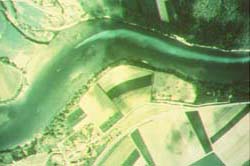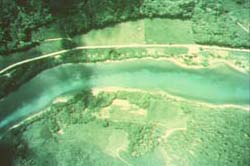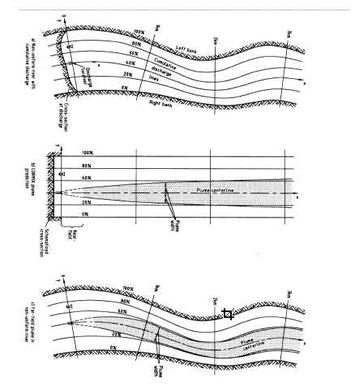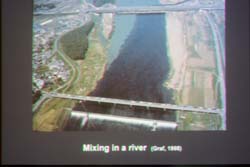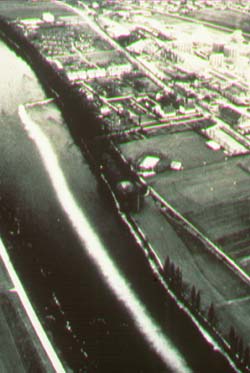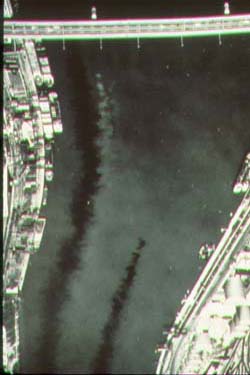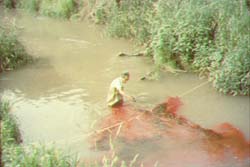Both geometric (bathymetric) and hydrographic (ambient discharge) data should be used for defining the appropriate rectangular cross-section.
A schematization may be quite evident for well-channeled and regular rivers or artificial channels.
For highly irregular cross-sections, it may require more judgment and perhaps several iterations of the analysis to get a better feel on the
sensitivity of the results to the assumed cross-sectional shape.
Be aware that a particular flow condition such as a river discharge is usually associated with a certain water surface elevation or "stage."
Data for a stage-discharge relationship is normally available from a USGS office; otherwise it can be obtained from a separate hydraulic
analysis or from field measurements.
CORMIX Channel Appearance Specification
The channel appearance can have an effect on the far-field mixing by increasing turbulent diffusivity for the passive mixing process, but will not significantly affect near-field mixing. Three channel appearance types are allowed in CORMIX.
- Type 1: Fairly straight and uniform channel.
- Type 2: Moderate downstream meander with a non-uniform channel.
- Type 3: Strongly winding with highly irregular downstream cross-sections.
CORMIX Far-field Prediction Methods
Although the main emphasis of CORMIX is on the near-field mixing behavior of discharges it can also be used for providing plume predictions at larger distances in the far-field provided the flow is not highly irregular with pronounced re-circulating zones and eddies in the ambient flow.
The FFLOCATR is a simple method for interpreting the schematized CORMIX far-field plumes within the actual flow patterns in natural rivers and estuaries. This procedure, based on the cumulative discharge method, by the image on the right.
The cumulative discharge method, first proposed by Yotsukura and Sayre is a convenient approach of dealing with lateral mixing in natural irregular (but not highly irregular with recirculating zones!) channels. In such channel geometry the passive far-field plume that is vertically mixed, or approaches vertical mixing, will be positioned around the "streamline", or more precisely the "cumulative discharge line", that passes through the plume.


